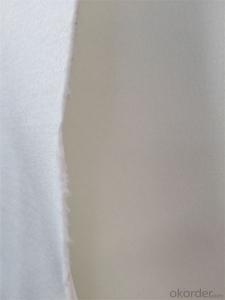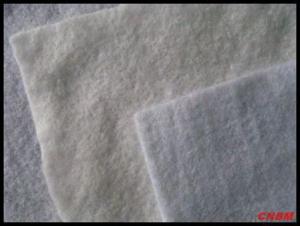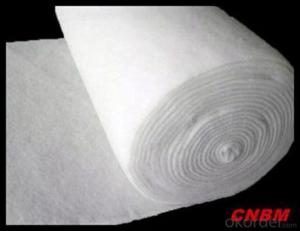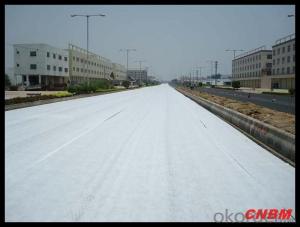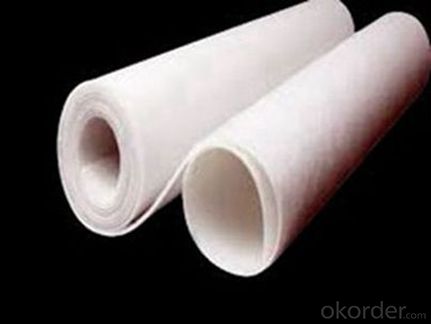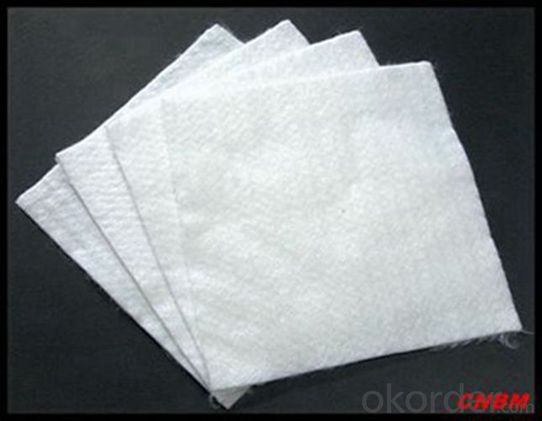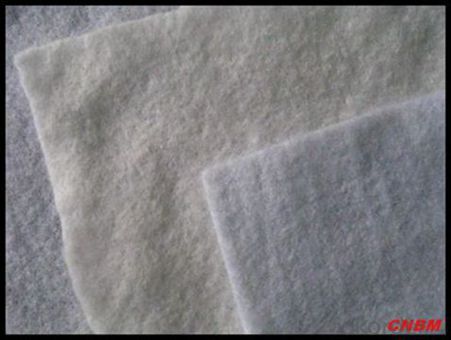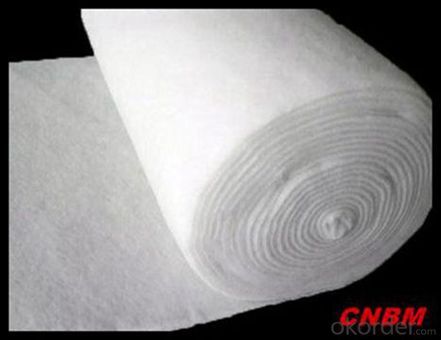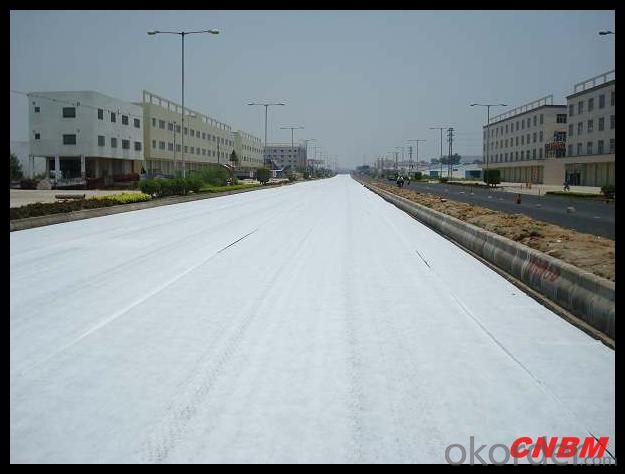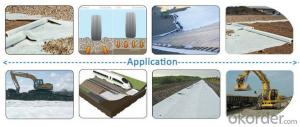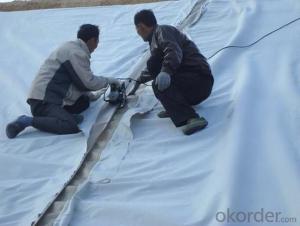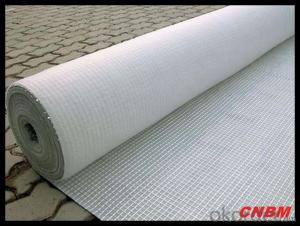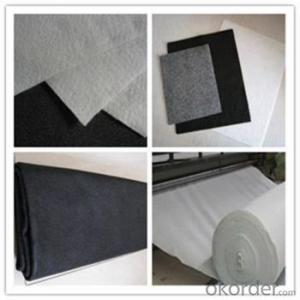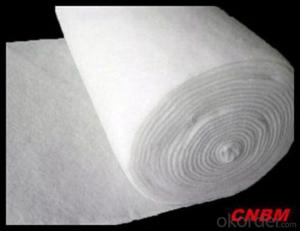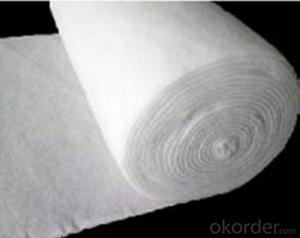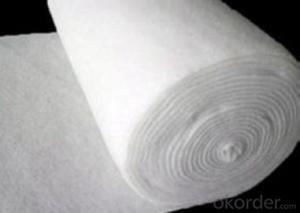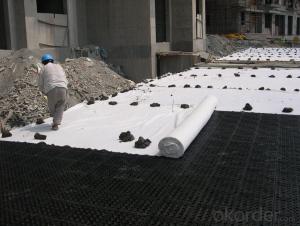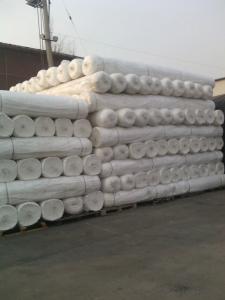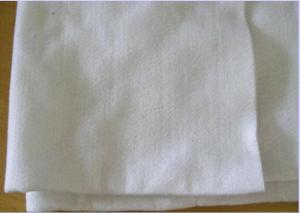Geotextil Pavaj - Non Woven Geotextile for Reinforcement and Drainage Cmax
- Loading Port:
- China main port
- Payment Terms:
- TT OR LC
- Min Order Qty:
- 2000 g/m²
- Supply Capability:
- 1000000 g/m²/month
OKorder Service Pledge
OKorder Financial Service
You Might Also Like
Specification
Description:
Nonwoven Geotextile 600G/M2 Geotextile Pp Non-Woven Geotextile Bags Made In China is a special kind of nonwoven geotextile because of its special manufacture method by puncturing the rolling formed layer made of randomly oriented short staple fiber. Our raw material is the top class 100% new PP(Polyproplylene) or PET(Polyester) fiber. The needle punch process involves forcibly entangling layers of loose staple fibre into three dimensional structure by sequentially punching and pulling out barbed needles through the fiber matrix, and forms a strong fabric that retains its dimensional stability, expands the serving year to all the applied project. Because of its proven track record and versatility, Needle Punched, as the most commonly used Nonwoven Geotextile, is widely used in civil and environmental engineering applications like subsurface drainage, roadway separation, railroad stabilization, erosion control, hard armor underlayment, landfill leachate collection, underground retention/detention systems, environmental protection and other projects.
Features
1)Geotextile can make the water flow easily, and form a drainage channel in the soil, and then make the liquid and gas out of the soil.
Make use of its pulling resistance and deformation resistance that can strength the soil to reinforce the stability of the construction structure and improve the soil’s quality.
2) Make the focus proliferate, deliver and decompose efficiently and prevent the soil from destruction from outside factor.
3) Prevent the top and bottom layer’s gravel, soil and concrete from mixer.
4) The mesh cannot be plugged easily – for the strain and moving quality of the network that formed by the antitype fiber.
5) High soaking quality—at the pressure of soil, it also can keep good soaking quality.
6) Corrosion resistant – using the polypropylene and polyester as raw material, it can resist the sour and aid, erosion, boring and oxidation.
7) The construction is easy; the weight is light, convenient for using, and it making construction easy.
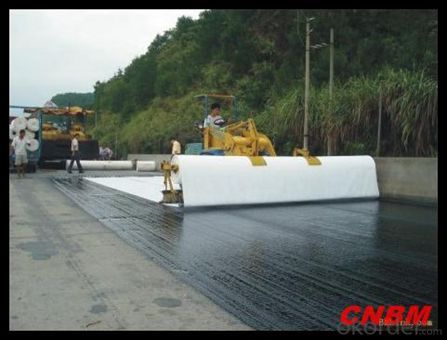
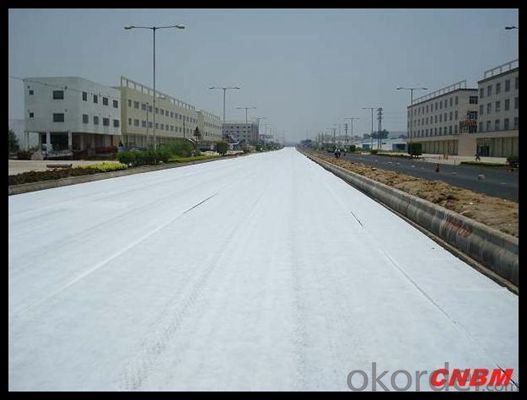
Main Export Markets:
Asia
Australasia
Central/South America
Eastern Europe
Mid East/Africa
North America
Western Europe
After-sales service
1.In order to provide customers with comprehensive technical support,we will provide technical and other related information upon request in a timely manner.
2.In required,we will appoint specialized technicians to the construction site to give technical trainings to construction people,and offer technical guidance throughout the whole construction process.
3.For damage due to shipment and delivery,after we receive the complaint,we will check the issure through provided pictures and videos.If our responsibility is confirmed,we wil offer free replacement.
4.When the construction is completed,as your request,our technical staff may participate in the final acceptance.
FAQ:
Q: What kind of payments does jenor support?
A: T/T, L/C, Cash are accepted.
Q: Do you charge for the samples?
A: Accordeing to our company policy, the samples are free, we only charge the freight fee. And we will return the freight fee during the next order.
Q: Can you produce according to customers' design?
A: Sure, we are professional manufacturer, OEM and ODM are both welcome.
Q: Do you have other products?
A: Yes, please check the pictures:
- Q: What are the key differences between woven and nonwoven geotextiles?
- The key differences between woven and nonwoven geotextiles lie in their manufacturing processes and physical characteristics. Woven geotextiles are made by interlacing yarns or fibers together to create a stable and strong fabric. On the other hand, nonwoven geotextiles are produced by bonding or felting fibers together without any weaving process. In terms of physical characteristics, woven geotextiles generally have higher tensile strength and puncture resistance due to their interlaced structure. They also offer better filtration properties as the open spaces between the woven yarns allow for effective water flow. Nonwoven geotextiles, however, have a higher permittivity, meaning they have a greater ability to allow water to pass through. Another notable difference is their durability. Woven geotextiles tend to be more resistant to UV degradation and offer better long-term performance, making them suitable for applications that require high strength and stability over time. Nonwoven geotextiles, although less durable, are often used for short-term projects or where filtration and separation are the main requirements. Overall, the choice between woven and nonwoven geotextiles depends on the specific application and desired properties. Woven geotextiles are typically favored for their strength and longevity, while nonwoven geotextiles are preferred for their filtration capabilities and cost-effectiveness in certain applications.
- Q: How do geotextiles help with soil reinforcement in retaining walls?
- Geotextiles help with soil reinforcement in retaining walls by providing additional stability and strength to the soil. They are placed between the soil layers to prevent erosion, and their high tensile strength helps distribute the load evenly, reducing the pressure on the retaining wall. Additionally, geotextiles promote efficient drainage, preventing water buildup behind the wall, which can further weaken the soil. Overall, geotextiles act as a barrier that enhances the overall performance and longevity of retaining walls.
- Q: How do geotextiles prevent soil erosion?
- Geotextiles prevent soil erosion by acting as a barrier that stabilizes the soil and enhances its strength. They are installed in the soil to prevent the movement of soil particles caused by water or wind. The geotextiles allow water to pass through while retaining the soil, thus reducing the velocity of water flow and preventing soil erosion.
- Q: Highway road crest u block below the geotextile roadway below the curb
- The use of steel template investment is too large, do not return the cost of the use of plastic template, the summer comes, will be the deformation of the current use of a curb stone molding machinery, prefabricated ratio can guarantee the strength of the mold release time, Segregation of water content, the mortar will stick mold, in short, the appearance of substandard match ratio can guarantee the strength, and this is only one aspect, you now encounter is the operability of concrete problems, but also in the mix of experimental templates The problem of stiffness is to ensure that the key to forming the surface of the finish problem is one of the factors, there is the effect of concrete vibrating and quality, concrete demolition of the time and so on. Addition agent, the rational use of release agent can be considered an auxiliary means
- Q: How are geotextiles incorporated into engineering designs?
- Geotextiles are commonly used in engineering designs to provide reinforcement, filtration, separation, and drainage functions. They are incorporated into various applications such as road construction, retaining walls, erosion control, and landfill engineering. Geotextiles enhance the stability and strength of structures, control soil erosion, improve drainage efficiency, and provide protection against soil contamination. Overall, geotextiles play a crucial role in enhancing the performance and longevity of engineering designs.
- Q: Where to sell geotextiles
- Those who produce geotextile manufacturers are selling black geotextile. Black geotextile according to the use of a lot of specifications, the price difference is very large. The weight per square meter between about 50-1000g grams, the weight of different unit price is different, the inquiry directly asked how much money per ton. According to the use of distinction between the current market price per ton price between 5,000 yuan - yuan. For the conservation, isolation, insulation of the geotextile the cheapest. In the 5000 yuan / ton between. For the filter, soft base treatment, slope protection, reinforced decoration, and other purposes of the black geotextile most expensive in - yuan / ton. The same black color, but different uses, production processes and production costs are not the same.
- Q: Geotextile how much money
- Good point of about 7000 a ton, different quality is not the same price.
- Q: How are geotextiles recycled?
- Geotextiles can be recycled through a process called mechanical separation, where they are sorted, shredded, and then processed to remove any impurities. The shredded material is then transformed into new geotextile products or used as a raw material for other applications, reducing waste and promoting sustainability.
- Q: There is no geotextile in the sand filter with the biological retention
- You can use geotextiles
- Q: What are the different geotextile installation techniques in filtration?
- Some of the different geotextile installation techniques in filtration include direct placement, trench installation, and wrapping. Direct placement involves placing the geotextile directly on the soil surface, while trench installation involves burying the geotextile in a trench or cut. Wrapping technique involves wrapping the geotextile around a structure or pipe to provide filtration. These techniques are used to enhance filtration and prevent soil erosion in various construction and environmental projects.
Send your message to us
Geotextil Pavaj - Non Woven Geotextile for Reinforcement and Drainage Cmax
- Loading Port:
- China main port
- Payment Terms:
- TT OR LC
- Min Order Qty:
- 2000 g/m²
- Supply Capability:
- 1000000 g/m²/month
OKorder Service Pledge
OKorder Financial Service
Similar products
Hot products
Hot Searches
Related keywords
